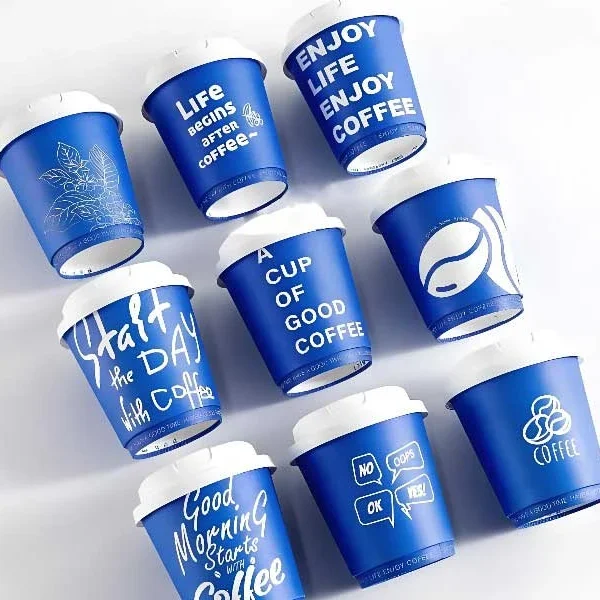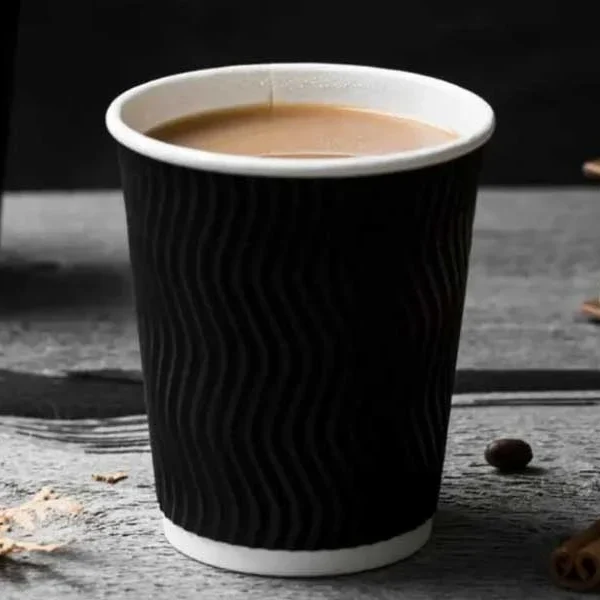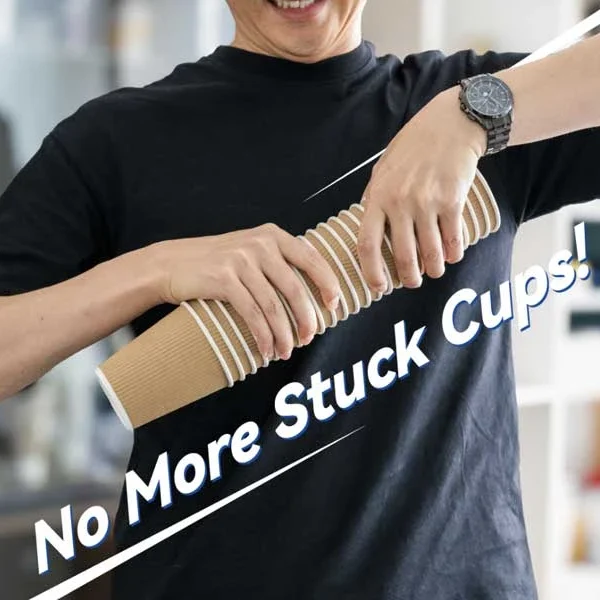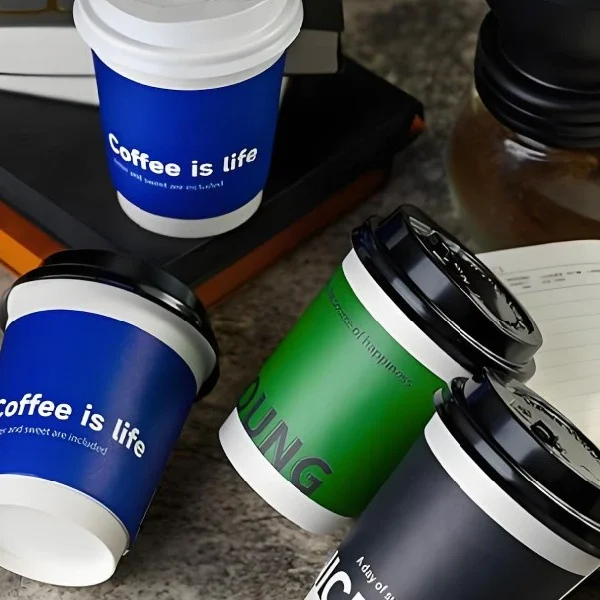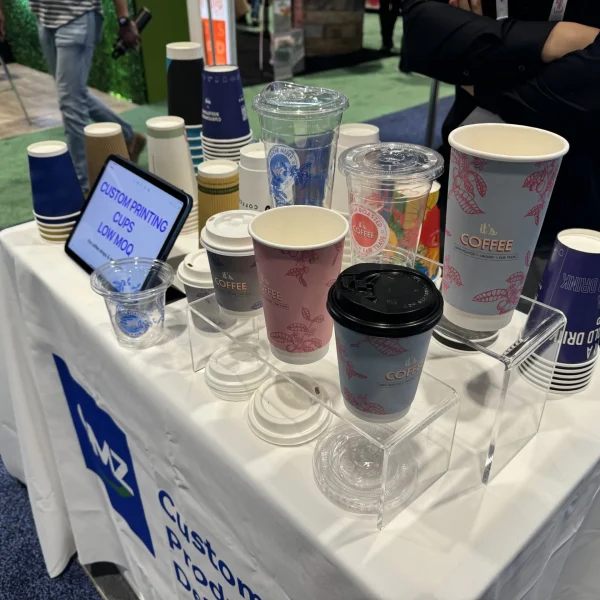Coffee has become an almost indispensable beverage in modern life. Whether it is a daily sip or a refreshing drink, people will choose a cup of coffee. The choice of coffee cup supplies greatly affects the drinking experience of coffee buyers and plays a vital role in the corporate image. When purchasing wholesale coffee cups, various factors must be considered to ensure that you choose the option that best suits your business needs. The following is a comprehensive list to guide your decision-making process.

Materials of Coffee Cups
Paper
It is often used as the first choice for hot drinks due to its environmental friendliness and good thermal insulation properties. Coffee paper cups can be single-walled or double-walled, the former is less expensive, while the latter provides better insulation and scald protection.
Plastic
Ideal for cold drinks. Although paper cups can also be used for cold drinks, plastic cups are less expensive than paper cups. Plastic cups are usually made of PET or PP, which are durable and transparent, allowing a clear view of the beverage.
Foam plastic
Foam provides excellent thermal insulation properties and can keep beverages hot or cold for a long time. However, it is not very environmentally friendly and is gradually being phased out in favor of more sustainable options.
Size Options
Coffee cups are also usually available in different sizes. Offering a variety of sizes ensures that you can cater to different customer preferences and beverage types. Drinks such as lattes, cappuccinos, and flat whites require more space to accommodate milk, resulting in larger cup sizes. Americanos are made by diluting espresso with hot water and are served in larger cups to accommodate the added water. Here are some common coffee cup sizes.
8 oz: Suitable for small coffees, espressos, and other hot drinks.
12 oz: The standard size for regular coffee servings.
16 oz: Suitable for large servings, often used for lattes and iced coffees.
20 oz: Suitable for customers who like large servings, often used for cold drinks and specialty drinks.
| Size (oz) | Size (ml) | Height (in) | Diameter (Top, in) | Diameter (Bottom, in) |
|---|---|---|---|---|
| 8 oz | 237 ml | 3.7 in | 3.0 in | 2.1 in |
| 12 oz | 355 ml | 4.4 in | 3.5 in | 2.3 in |
| 16 oz | 473 ml | 5.3 in | 3.5 in | 2.3 in |
| 20 oz | 591 ml | 6.3 in | 3.9 in | 2.6 in |
Lid Compatibility
Ensuring that the lid fits securely is critical to preventing spills and maintaining beverage temperature. There are three types of commonly used coffee cup lids, and you can choose a matching lid based on the type of coffee you are drinking.
Flat lid
Usually used for hot drinks, with suction holes. It is simple, effective in basic use, prevents spills, is more suitable for ordinary coffee, and maintains temperature fairly well.

Dome lid
Great for drinks with whipped cream, foam, or other ingredients because it provides extra space. It has better heat retention and is more visually appealing, suitable for specialty drinks such as lattes and cappuccinos.
Sip-Through lid
These lids usually have a resealable, suction-based opening that can be opened and closed as needed. Excellent anti-spill performance makes it convenient to drink on the go, and is often used to hold hot drinks. But it may not be convenient for quick sips.
Cup Insulation Options
Single-walled Cup
Single-layer coffee cups have low insulation, but are cost-effective. Hot drinks usually require a sleeve, and are best suited for cold drinks or hot drinks with a sleeve.
Double-walled Cup
Double-layer structure with air gap, excellent insulation performance, no cup sleeve required, but more expensive. Very suitable for hot drinks and keeping the temperature of drinks.
Ripple-walled Cup
Three-layer structure, the outer layer is corrugated. No cup sleeve is required, the insulation effect is the best, and the price is the most expensive. Suitable for hot drinks and takeaways.
Supplier Reliability
Choosing a reliable supplier ensures consistent quality and timely delivery, and can make for a pleasant relationship. Criteria for evaluating potential suppliers are as follows:
Reputation
Investigate the supplier’s history in the industry. Long-term suppliers with a good track record are generally more reliable.
Delivery Time
Investigate their record of on-time delivery. Ask about their logistics and how they handle delays or problems. Or ask about their contingency plans for handling supply chain disruptions or emergencies.
Quality Assurance
Make sure the supplier adheres to relevant industry standards and certifications, and ask about their quality control processes and procedures.
Customer Service
Evaluate how quickly and efficiently the supplier responds to your inquiries. A reliable supplier should be easy to contact and willing to resolve any issues.
Support Customization
Look for suppliers that support customized services. The customized design of coffee cups is very important for spreading brand image and improving customer experience. Finding a supplier who is good at customized design can help solve more problems.

Conclusion
Coffee cups are an integral part of the coffee experience, influencing flavor, temperature control, customer satisfaction, and brand image. They are a powerful marketing tool, enhancing the sensory experience, and can communicate important messages about sustainability and brand value. Choosing the right coffee cups and using them effectively can significantly enhance your customers’ overall experience and strengthen your brand.
GMZ is a professional disposable paper cup manufacturer that not only has strict quality control and requirements, but also provides and excels in custom designs in various styles. GMZ has become an industry leader through outstanding performance and is always committed to bringing customers the best products and services.




